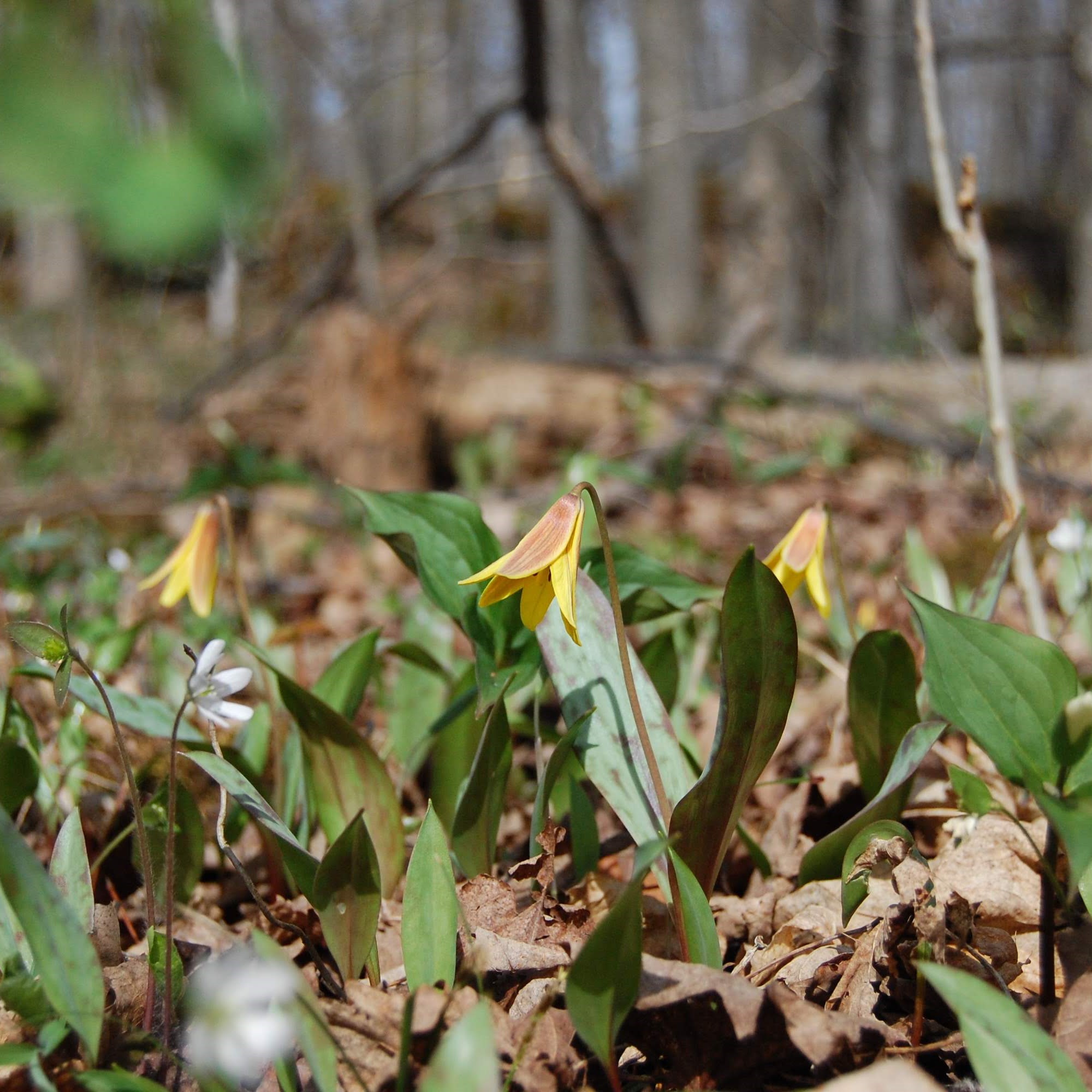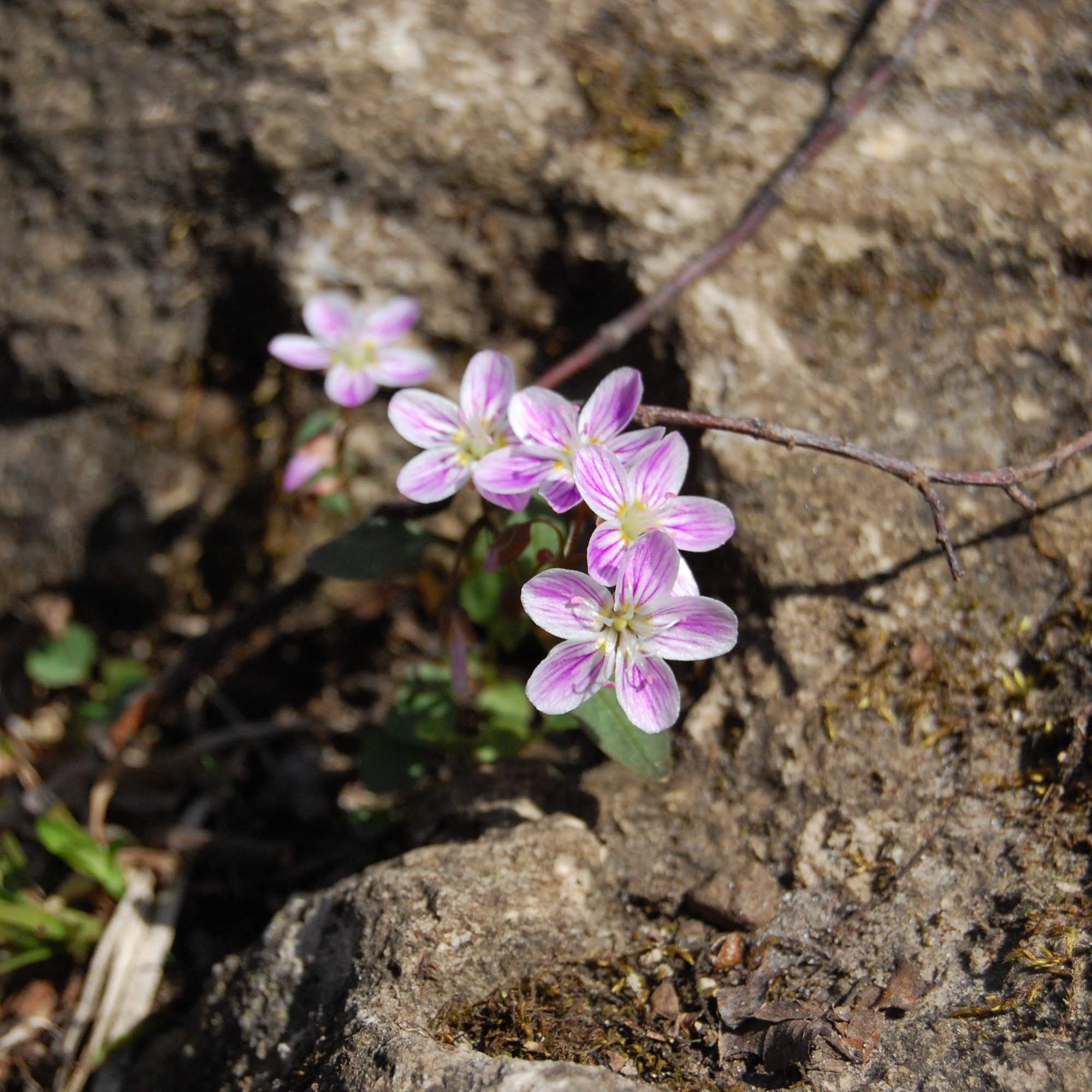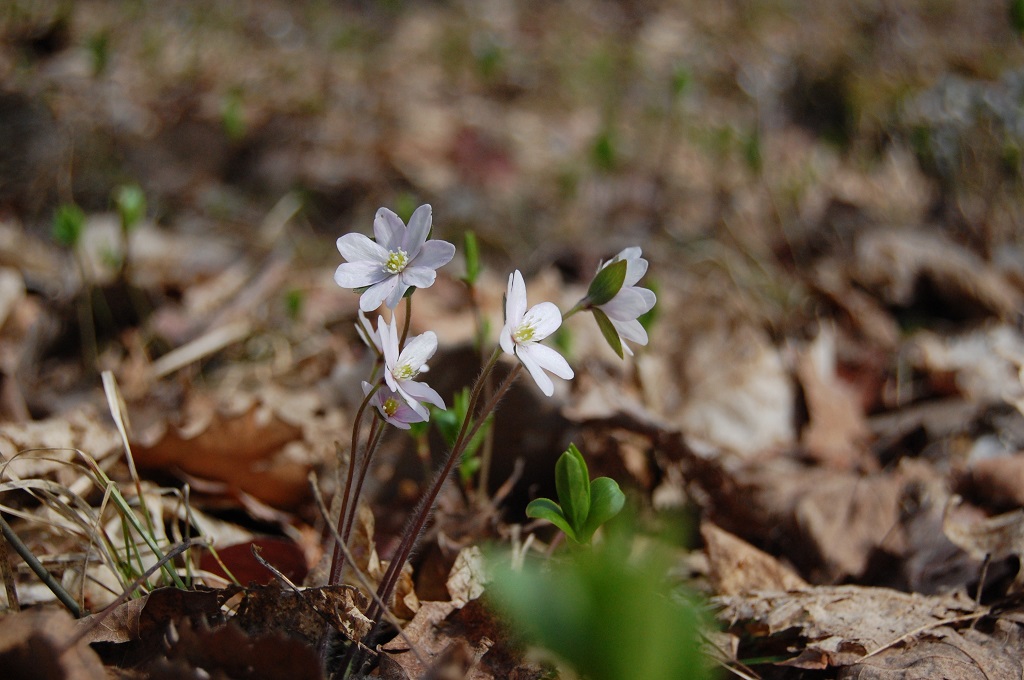Every year myself and many others eagerly await the arrival of the ephemeral spring wildflowers. In the past few days I’ve been out scouting for them around Peterborough, and it appears they will be in full bloom soon! In Peterborough it is possible to see these ephemeral forest flowers in Burnham Woods, the Trent Nature areas, the Fleming College Property, and some places in Jackson Park. When visiting these places, be sure to tread carefully and take nothing but photographs.
Being more than just photogenic and beautiful to look at, early spring wildflowers can be an excellent indicator of forest health. These early wildflowers support insects and pollinators of many different varieties. Notably, many of these spring wildflowers are pollinated by various ant species, instead of other flying insects. A good reminder to not forget about ants as an important pollinator in our ecosystems! Beyond pollinators, many larger animals rely on these plants as a source of forage. Many spring flowers produce fruit, and leaves that forest animals will feast upon.







These flower species are often sensitive to environmental changes and human activity, which also makes them an early indicator of a declining forest health. Changes in the water cycle due to nearby construction, trampling of plants by humans, and invasive species can all have an impact on the health of these wildflower and forest communities.
Here in Peterborough’s Jackson park, these spring wildflowers are few and far between. The forest has experienced many of the impacts mentioned above, and trampling of the forest floor has reduced the chances of their revival to a minimum. It does not need to be this way, communities in other parts of the province have created simple and effective ways of managing the human impact on the forest ecology.
In urban forests, often the forest undergrowth becomes trampled by people walking through the forest. The trampling of the undergrowth results in a decline of flowers, and the remaining flowers are often picked by visitors. In London Ontario, along the Thames River the Garden Club of London had an elegant and beautiful solution to this problem. Last year I visited their woodland garden to explore this oasis in the middle of their city. By strategically placing fencing throughout the forest and adding pathways where people frequently passed through the forest, the woodland garden was able to revive the local forest ecology while still providing opportunities for visitors to pass through the forest and marvel at the beautiful flowers.
Urban forests, although not pristine, do not need to be resigned to an eternity of ecological degradation through human use. With some tender care the Garden Club of London shows us how some careful planning can bring back the wildflowers for all of us to enjoy. It is my personal hope that in the coming years we can bring the flowers and pollinators back into Peterborough’s own Jackson Park.




